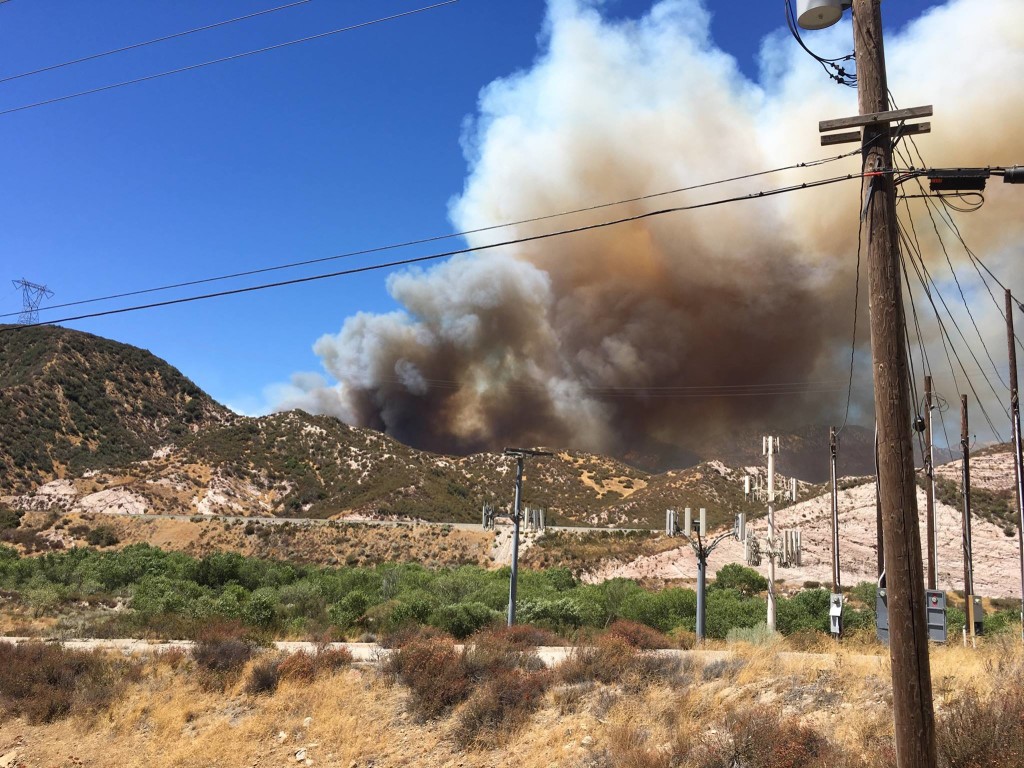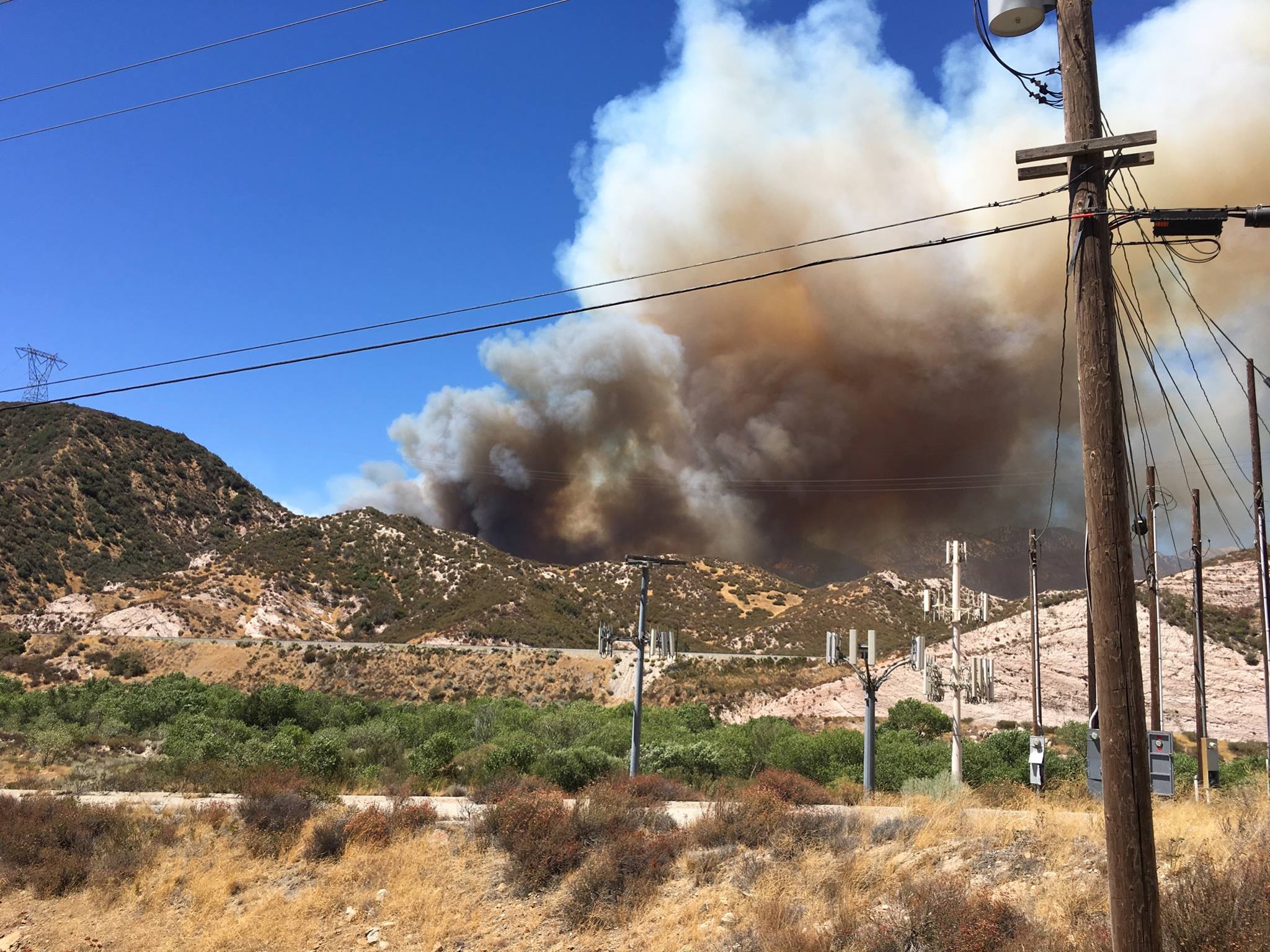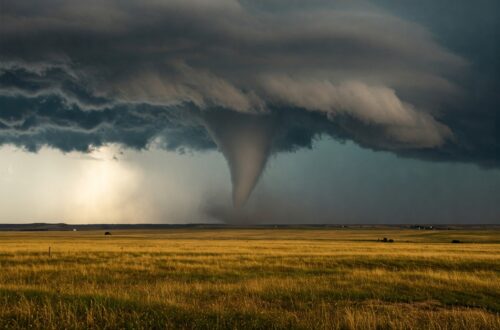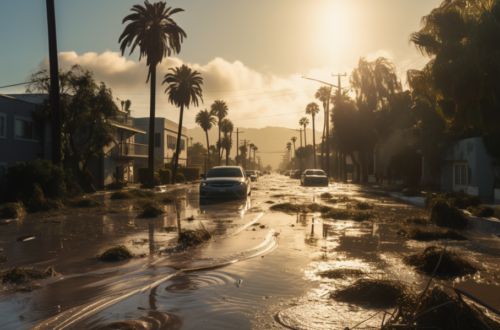By DiscoverTheOdds.com
Updated August 31, 2016
Every year, wildfires in California burn through thousands of acres of land, destroying trees and vegetation, ravaging communities across the state. As of August 20, 2016, there have already been 4,084 fires in California, affecting 150,498 acres of land. These numbers are well above the five-year averages (3,378 fires and 97,371 acres) for the same time interval.
 Source: San Bernardino County Fire/Wikimedia Commons
Source: San Bernardino County Fire/Wikimedia Commons
Real-Time Map: Fires in California
Click on a fire on the map below for more information.
Source: Cal Fire
After years of severe drought in California and record heat, few people are very surprised that this year’s fire season has been so damaging and relatively large in its scale. Residents of California know that increasingly parched terrains make the state susceptible to a more bruising fire season.
If fires could somehow be prevented, lives would be saved, ecosystems, communities, and homes would be left intact.
There is an almost intuitive understanding that dry, hot weather conditions make the fires in California worse, perhaps making even more dire the need to draw a clear distinction in our minds between the question of what makes the fires in California worse and what causes them. Knowing what is sparking the fires in the first place would allow us to determine whether their inception is simply beyond our control or whether the fires are in any way preventable. If fires could somehow be prevented, lives would be saved, ecosystems, communities, and homes would be left intact.
Contents
What’s Causing Fires in California?
What are the odds that a fire in California is caused by a lightning strike, for instance, or by something else?
Through decades of fighting fires in California and collecting incident data, Cal Fire and local fire agencies statewide have paved the way to the discovery of the answer to that question. As part of the One Less Spark, One Less Wildfire campaign, California’s fire fighting agencies inform the public that 95% of all wildfires in California are caused by the activity of people.
95% of all wildfires in California are caused by human activity.
It may be surprising to some that although some wildfires are caused by arson, the act of deliberately setting a fire, of greater concern are vast majority of fires that are often the result of people unintentionally creating a spark or even “doing the right thing, the wrong way.” The unfortunate mishaps generally relate to five types of activity: equipment use, debris burning, vehicle use, campfires, and target shooting.
ARTICLE CONTINUES AFTER ADVERTISEMENT
How People are Accidentally Sparking So Many Fires in California
Here are some examples of how people are inadvertently causing fires:
Equipment Use
- Mowing the lawn after 10 a.m. or when it’s windy or excessively dry.
- Using a lawn mower to mow weeds or dry grass. Metal blades striking rocks can create sparks and start fires.
- Driving a vehicle onto dry grass or brush. Hot exhaust pipes and mufflers can start fires are often not seen until it’s too late.
Debris Burning
- Burning landscape debris piles in larger than 4 feet by 4 feet piles.
- Not clearing all flammable material and vegetation within 10 feet of the outer edge of pile.
- Not keeping a water supply
and shovel
close to the burning site.
- Burning debris in windy weather conditions and where the surrounding vegetation is very dry.
Vehicle Use
- Not securing chains and practicing unsafe towing. Dragging chains, which throws sparks. Not using appropriate safety pins
and a hitch ball
to secure chains.
- Dragging parts on the ground.
- Not maintaining proper tire pressure
. Driving on exposed wheel rims, which throws sparks.
- Not carrying a fire extinguisher
in their vehicle and learning how to use it.
- Driving their vehicle onto dry grass or brush, which creates the potential for hot exhaust pipes and mufflers to start fires that are often not seen until it’s too late.
- Not properly maintaining brakes, resulting in brakes worn too thin, possibly causing metal to metal contact, which can cause a spark.
Campfires
- Not keeping a shovel and bucket of water nearby at all times.
- Not selecting a level open location away from heavy fuels such as logs, brush or decaying leaves and needles.”
- Leaving a fire unattended and/or not extinguishing the fire completely before leaving.
- Not using the “drown, stir and feel” method to completely extinguish an open fire: drown the fire with water, then stir around the fire area with a shovel to wet any remaining embers and ashes, and finally, feel the area with the back of the hand to ensure nothing is still smoldering.
Target Shooting
- Not placing targets in safe locations like dirt or gravel.
- Shooting in areas with dry vegetation and/or on hot windy days. Bullet fragments can be extremely hot and can easily start a fire.
- Using steel targets or rocks, which may throw sparks into nearby vegetation, instead of using safer targets like paper targets
or clay pigeons
.
- Using steel core and solid copper ammunition, which have the highest potential to start fires, instead of lead core bullets that are less likely to ignite surrounding vegetation.
- Exploding targets.
- Not keeping a shovel, fire extinguisher and extra water on hand, in case a fire does start.
For more information and strategies to prevent wildfires in California from happening in the first place, visit the One Less Spark, One Less Wildfire page. If you do see a fire, report it: Call 9-1-1.



